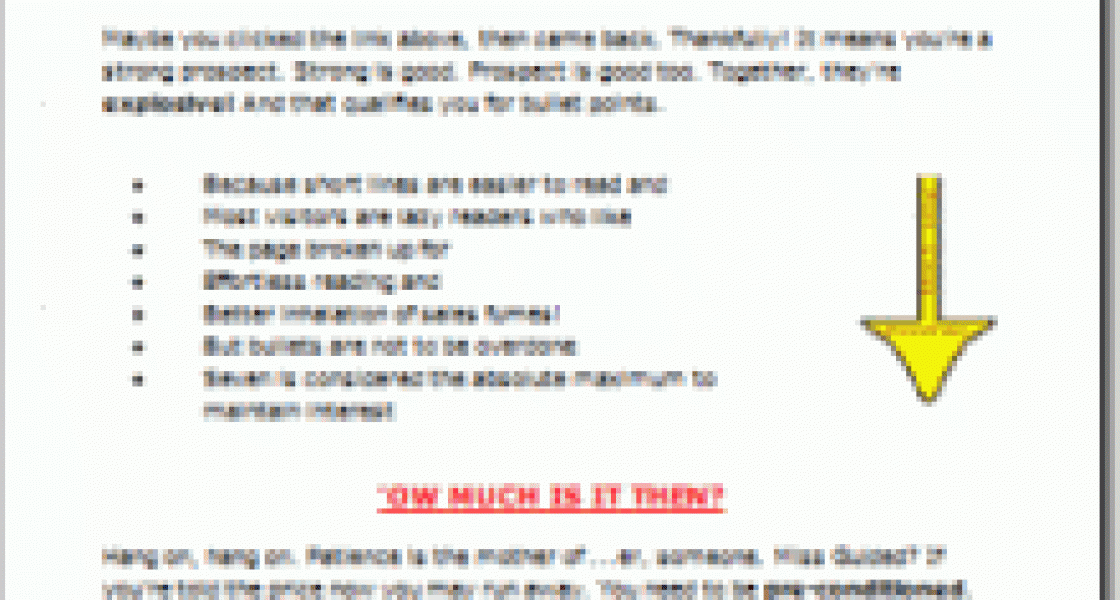 Personally, I’m not a fan of the traditional long-form sales letter, either via email or on the web. And if they don’t work for me, they don’t work for a lot of other people, as well. Sure, I know they do work for many internet marketers – that doesn’t mean they work for everybody, or for your audience.
Personally, I’m not a fan of the traditional long-form sales letter, either via email or on the web. And if they don’t work for me, they don’t work for a lot of other people, as well. Sure, I know they do work for many internet marketers – that doesn’t mean they work for everybody, or for your audience.
I’ve been doing some copywriting work for a client targeting small business owners – mostly busy professionals in mainstream, brick-and-mortar businesses. We’ve been using a totally different, “less is more” approach on our copy. The emails are on the order of 300 words. The landing page copy is all above the fold.
I can’t post the actual numbers, but let’s just say that the three key metrics – open rate, click-through rate, and conversion rate – have been well above the standards for their industry. The proof is in the pudding, as they say.
But the icing on the cake came today, with this message from someone on the list:
Hi guys,
I just wanted to let you know how refreshing it is to receive a sales letter that looks and sounds normal instead of the typical <famous internet marketer’s name deleted> junk mail format, which I never bother to even read.
Best,
Bob
Copyblogger has a great post on this topic, in which he describes this alternative approach:
Product Launch Formula founder Jeff Walker came up with an interesting way of describing the new approach. His friendly, conversational email sequences became a “sideways sales letter.”
Walker is a great example of a sharp marketer who knows he has a better shot at his prospects if he gently ropes them in with a net of high-quality, relationship-building content, rather than trying to harpoon the sale in a single shot.
The copy is just as long (or longer) than the lengthy pages created by more traditional copywriters. It does all the same work — answering the most frequently-raised objections, building rapport, presenting benefits, building urgency.
But it’s delivered over time, and in a friendly, relaxed tone of voice. It doesn’t seem desperate. And it doesn’t burn out the prospect. Even if the prospect doesn’t buy this time, he’s in a great mood to buy something else down the line.
Know your audience. If they aren’t the “make money online” crowd, don’t expect that kind of language to necessarily work for them. And even if it does “work”, that doesn’t necessarily mean a different approach wouldn’t work too. Keep in mind that it’s not just about converting leads to your call-to-action, but also your brand positioning. Long-form sales letters don’t project high-end professionalism.
If you really want to know for sure which works best with your audience, try a split test on a sample of your list and see for yourself.
For more on this topic, see:
- Rage Against the Sales Letter by Jonathan Fields
- Short Sales Letters (and Why They Work) by Dave Navarro
- Are Long-Form Sales Letters Dead? by David Risley
- Click Here, You Idiot – A spoof of long-form sales letters, just for fun









